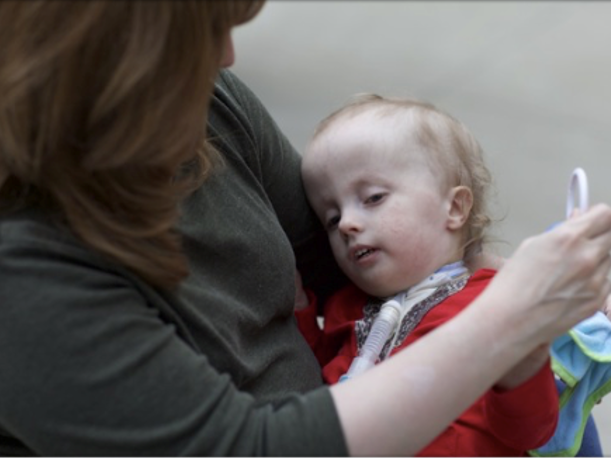Trisomy 18 Diagnosis

Basic Phenotype
Trisomy 18 is caused by an extra copy of chromosome 18 and impacts about 1 in 5,000 live births. Individuals with Trisomy 18 often have slow growth before birth, a low birth weight, and may have heart defects and other health problems. Other features of Trisomy 18 include a small head; a small jaw and mouth; and clinched fists with overlapping fingers. About 72% of Trisomy 18 pregnancies result in miscarriage or stillbirth between 12 weeks to term. Less than 10% of babies born with Trisomy 18 currently survive past the first year, but some children and adults can live longer with intensive medical care. Individuals with Trisomy 18 also have significant intellectual disabilities. (Genetic Home Reference, 2015)
Other Important Life Outcomes
- Modern interventions and supportive measures have changed the life trajectory for a small but significant percentage of children with these trisomies (about 10%), making the phrase “not compatible with life” offensive to that population. (Baty et al. 1994)
- Families affected by Trisomy 13 and 18 often say that they want the opportunity to determine how little or how much medical care their fetus or child receives, and they want access to support services and grief counseling as needed.
- For families who opt to pursue aggressive medical treatment, the idea that children with trisomy 18 are are increasingly being seen as candidates for non-complex heart surgery. (Graham et al. 2004) Survival to leave the hospital is about 88% and infancy survival is improved. (Kosho et al. 2006)
- Even though children who have trisomy 18 experience substantial developmental delay, they can demonstrate developmental quotients at the 8- to 9-month level and can have skills common to 2-year-old children, such as feeding oneself. (Guon et al. 2014)
Other Resources
Trisomy 13 and Trisomy 18: Preparing for Your Baby’s Arrival
References
- https://ghr.nlm.nih.gov/condition/trisomy-18
- Baty BJ, Jorde LB, Blackburn BL, Carey JC. Natural history of trisomy 18 and trisomy 13: II. Psychomotor development. Am J Med Genet. 1994;49(2):189–194
- Graham EM, Bradley SM, Shirali GS, Hills CB, Atz AM; Pediatric Cardiac Care Consortium. Effectiveness of cardiac surgery in trisomies 13 and 18 (from the Pediatric Cardiac Care Consortium).Am J Cardiol. 2004;93(6):801–803
- Kosho T, Nakamura T, Kawame H, Baba A, Tamura M, Fukushima Y. Neonatal management of trisomy 18: clinical details of 24 patients receiving intensive treatment. Am J Med Genet A. 2006;140(9): 937–944
- Guon J, Wilfond BS, Farlow B, Brazg T, Janvier A. Our children are not a diagnosis: the experience of parents who continue their pregnancy after a prenatal diagnosis of trisomy 13 or 18. Am J Med Genet A. 2014;164A(2):308–318
